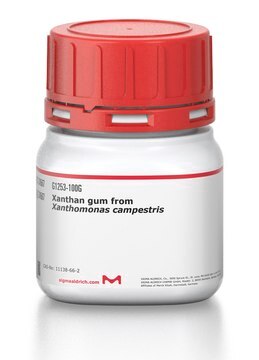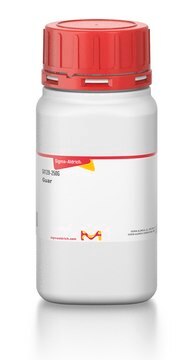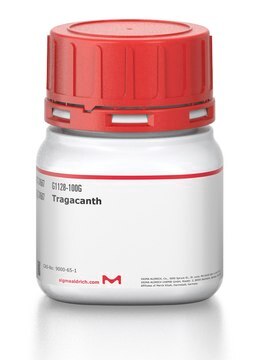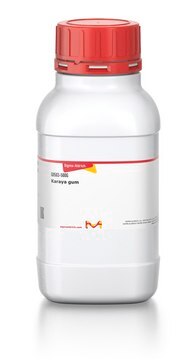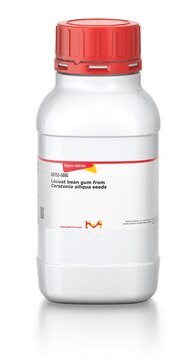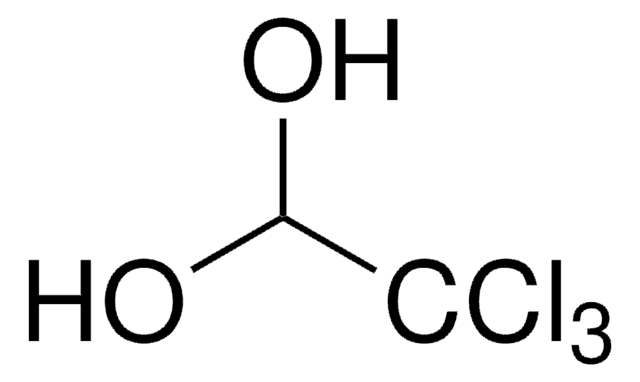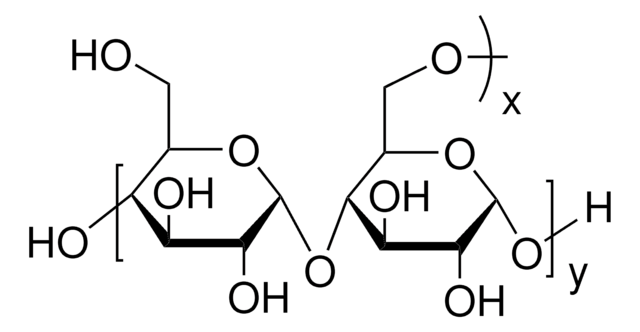G9752
Gummi arabisch aus Akazien
branched polysaccharide
Synonym(e):
Akaziengummi, Gummi arabicum
About This Item
Empfohlene Produkte
Biologische Quelle
plant (Acacia)
Qualitätsniveau
Form
powder
Farbe
white to faint beige
Lagertemp.
room temp
Suchen Sie nach ähnlichen Produkten? Aufrufen Leitfaden zum Produktvergleich
Verwandte Kategorien
Allgemeine Beschreibung
Anwendung
- as an emulsifying agent to determine lipase activity in shrimps
- for the visualization of mossy fiber sprouting
- as an immunogen and for coating microtitre wells in plate-trapped antigen ELISAs (PTA-ELISAs)
- for silver enhancement for immunohistochemistry
- as a component for Timm′s staining solution
- in nitrocellulose-based soil adhesion assay
- to separate few-layer graphene (FLG) from bulk graphite layers
Sonstige Hinweise
Lagerklassenschlüssel
11 - Combustible Solids
WGK
WGK 3
Flammpunkt (°F)
Not applicable
Flammpunkt (°C)
Not applicable
Persönliche Schutzausrüstung
dust mask type N95 (US), Eyeshields, Gloves
Analysenzertifikate (COA)
Suchen Sie nach Analysenzertifikate (COA), indem Sie die Lot-/Chargennummer des Produkts eingeben. Lot- und Chargennummern sind auf dem Produktetikett hinter den Wörtern ‘Lot’ oder ‘Batch’ (Lot oder Charge) zu finden.
Besitzen Sie dieses Produkt bereits?
In der Dokumentenbibliothek finden Sie die Dokumentation zu den Produkten, die Sie kürzlich erworben haben.
Unser Team von Wissenschaftlern verfügt über Erfahrung in allen Forschungsbereichen einschließlich Life Science, Materialwissenschaften, chemischer Synthese, Chromatographie, Analytik und vielen mehr..
Setzen Sie sich mit dem technischen Dienst in Verbindung.
